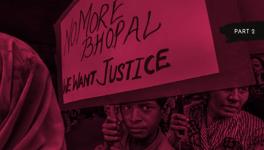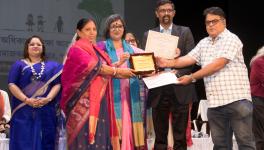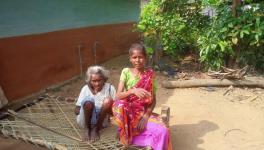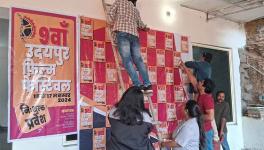Child Marriage Bill: Laws Turn Futile When Disparity Becomes a Norm
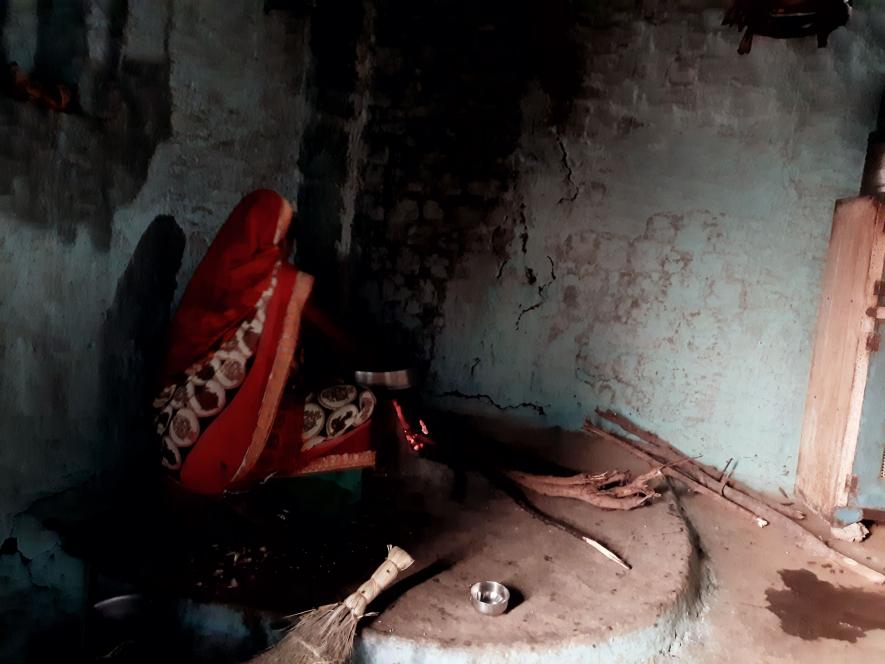
Seema Ivne in her kitchen doing everyday chores. Photo: Sejal Patel
A newlywed 16-year-old girl dressed in a red saree with a thick line of sindoor is startled by the question of when she was married. "I was 10 years old," she says and sprints away, saying that her sister can better answer these questions. "She will be back in an hour; you could ask her," she adds, refusing to tell her name. This is the Adivasi settlement (also called Angarha) in the Tikamgarh district of Madhya Pradesh, where every second or third family has married their girls off early.
On December 16, 2020, based on the recommendations of a NITI Aayog task force, the Union Cabinet approved a proposal to raise the legal age of marriage for women from 18 to 21. On December 20, the Prohibition of Child Marriage (Amendment) Bill, 2021, was introduced in the Lok Sabha, following which it was sent to a Standing Committee. The bill argues that the "highly pernicious practice of child marriage" continues despite the Prohibition of Child Marriage Act (PCMA), 2006. So, there is "an urgent need to tackle this societal issue and bring in reforms." Besides, it says that all the personal religious laws relating to the age of marriage do not suggest a uniform age of marriage for men and women and that women were put at "a disadvantageous position with regard to education, vocational education, attainment of psychological security and skillsets."
However, it is harder to envision that the decision was made to discourage child marriage, promote women's education, particularly higher education, or empower women in general. It is a valid concern that raising the marriage age will not reduce the percentage of child marriages because early marriages are driven by more important socio-economic concerns, with a few cultural factors thrown in.
As per the latest National Family Health Survey (NFHS) report, there are significant gaps across States and Union Territories in the proportion of women marrying under 18. Child marriage is a determinant of poor maternal and child health and the ugly social status of women. Bihar and West Bengal, with around 41% of such women, account for the highest prevalence of early marriages. More comprehensively, where there has been improved access to affordable and high-quality education and improved economic indicators, the average age at which women marry is greater than 18.
Rinki Tiwari (35), an Anganwadi worker, says, "Once a girl becomes sayyani (mature), the risk of possible pregnancy before marriage compels the families to marry off their daughters early." There is also a persistent fear of fleeing among villagers who are poor labourers.
The practice of child marriage is prevalent in several parts of central India, including Madhya Pradesh, Uttar Pradesh, Rajasthan and Bihar. Some of the factors associated with child marriage include lack of access to education, caste discrimination, poverty, and poor family planning.
Discrimination against girls in decisions regarding education, employment, sexuality, sexual behaviour, and other areas creates and perpetuates the conditions that lead to child marriages, according to a 2011 UNICEF report titled "Ending child marriage and adolescent empowerment."
"What if their girls run away with someone? The kids don't learn anything in school and are just promoted. They sit back at home after that, and the parents can't afford to send them out to study," Tiwari adds and goes on to explain how people in the village often marry off their young daughters to older men. The groom's family pays an amount (often in lakh) for the bride, bringing them money to feed the rest of the family. "They don't need to pay for dowry; instead, they get money in return," Tiwari adds.
Meena Uikey eloped with Ramkrishna Uikey at the age of 16. "If I hadn't eloped, some middle-aged man would marry me in exchange for some monetary help," says Meena Uikey. The residents also stated that upper caste men who face difficulties marrying buy young girls from tribal pockets. Fear of forced marriages encourages women like Meena Uikey to elope at a younger age.
Meena Uikey eloped from her parent's house at 16. Photo: Sejal Patel
In another Adivasi settlement (called Fokatpura) on the outskirts of Sukhras, MP, Seema Ivne lives along with her family of seven members, including her two daughters. She is 18 years old and was married off four years ago to Rakesh Ivne (25), a daily wage labourer. Her parents live in Limacha, a village near Timarni Tehsil. Seated nearby her chulha, preparing dinner for the family, the young mother says, "It has become harder to sustain the family in the age of inflation; if we marry off the girls, there's one lesser mouth to feed."
Backyard of Seema Ivne's house Photo: Sejal Patel
The family's monthly income is around Rs 1,500 as Rakesh Ivne is the sole earning member now. Seema Ivne had to work during her early pregnancy to support her husband financially and suffered through two miscarriages.
"Nobody from the hospital staff came to attend during these initial hours when I was admitted."
Her 14-year-old sister-in-law Nisha Ivne, one among Seema Ivne's three sisters-in-law, has never been to school. All three, Nisha Ivne, Banu Ivne and Aarti Ivne are aware that Seema Ivne was married off at 14; they can also be married off in no time. "We sit at home all day. Now that we are mature, we can't go out to work," says Banu Ivne. Seema Ivne recalls a heinous crime in their neighbourhood in July 2021, where a young construction worker was abducted and sold off in Khandwa. After a police investigation, it was found that the girl was raped and her body mutilated.
Nisha Ivne (17) with her friend Khushi. Photo: Sejal Patel
"Woh maamla bhi paise leke rafa-dafa ho gaya [That case was also compromised by some amount of money]," says Sanjay Dubey, a local reporter working in the region. "We are always preached about the legal consequences of child marriage, but nobody comes when our daughters get abducted," says 56-year-old Salita, who was married off at 13 and lives with her husband, Vishram Uikey.
Salita Uikey has been living in Fokatpura for 43 years. Photo: Sejal Patel
Madhya Pradesh continued to report most cases of rape of minors, with 3,259 incidents in the year 2020 as well. Not only cases of rape of minors, according to NCRB report, MP also recorded 17,008 incidents of crime against minors- the highest in the country during the period. At 17, the most number of foeticide was also reported from MP, and the state also registered the most number of rapes of tribal women with 339 cases.
According to Tiwari, villagers from the rural areas migrate to a place where they can find work during the harvest. They also move to cities like Delhi to work as labourers for a month or two. Then they do petty jobs for the rest of the year. "How do we protect our girls once they are capable of getting pregnant?" asks Usha Adivasi, a daily wage labourer; who recalls getting married off when "5 kgs of wheat flour used to cost around Rs 50."
An earthen or brick stove (Chulha) that Usha Adivasi uses for cooking due to soaring and unaffordable cooking gas prices.
She hails from Bhopal and fails to recall the date of her birth. "Jab hamari shaadi hui thi, hum MC (menstrual cycle) se nahi hote the [When I was married, I didn't get my periods]," whispers Usha Adivasi as she tries to sneak away from the crowd in the Anganwadi centre.
The concerns of Usha Adivasi and other women like her are valid. The lawmakers need to go beyond the tokenism of raising the marriage age, which they believe would stop further persecution of young women and provide them security.
Usha Adivasi left school at an early age because she was severely beaten up by the teacher and recalled never having the courage to go back to school again. So, she always did the household chores and was married off early. She picks peanuts, potatoes and bricks for a living. She and her husband, Mani Ram Adivasi (32), manage to gather Rs 7000-8000.
Usha Adivasi outside her hut in Angarha village of Tikamgarh district. Photo: Sneha Richhariya
"We feed our kids and get basic household items with this income," says Mani Ram Adivasi. They have two kids (a girl, eight and a boy, 10) who studied in the village school till 5th grade but are not qualified enough to study further in the city. "They have been promoted till 5th class even though they don't even know how to count," asserts Usha Adivasi.
The Prohibition Of Child Marriage Act, 2006 bans marriage for girls less than 18 years and boys less than 21 years of age. The punishment for promoting or permitting such a marriage is up to two years of imprisonment and a fine up to Rs. 1 lakh. According to estimates, at least 1.5 million girls under the age of 18 marry in India each year, making it the country with the highest number of underage brides globally, which accounts for one-third of the global total. Currently, nearly 16% of adolescent girls aged 15 to 19 are married, as per the 2011 UNICEF report.
However, the Anganwadi worker in the village says that the punishment is neither pragmatic nor possible because social norms are the unwritten rules of acceptable behaviour. The rural marginalised population is not well-versed with the laws. Besides, the current legislation on child marriage defies logic and laws that conflict with norms is likely to go unenforced.
Sejal Patel and Sneha Richhariya are students of Convergent Journalism at Jamia Millia Islamia. Their area of interest is development based rural issues. The views expressed are personal.
Get the latest reports & analysis with people's perspective on Protests, movements & deep analytical videos, discussions of the current affairs in your Telegram app. Subscribe to NewsClick's Telegram channel & get Real-Time updates on stories, as they get published on our website.











